11 Recruiting Strategies to Help Your Business Stand Out
If you’ve had to dust off your “We’re Hiring!” signs over the last few months, you’re not alone. The current landscape of unprecedented skill shortages has left many business owners grappling with the challenge of attracting and retaining talent, prompting them to revisit and revamp their recruiting strategies. This mass exodus of workers from the labor market has become a significant concern, keeping business owners up at night as they navigate this new reality.
Employers are concerned about their ability to deliver value propositions that satisfy employees and a subsequent inability to retain and recruit talent. According to Gartner, Inc.’s latest Emerging Risks Monitor Report, “talent risks” are top of the list of pandemic-related concerns. Issues such as supply chain disruptions and cybersecurity threats trail in the second and third spots.
There are fears that the potential consequences of an inadequate talent strategy could lead to multiple organizational disruptions in 2022. Current US vacancies are highest among low-skill occupations. Employment in such roles remains below pre-2020 levels. The rise of the “great resignation” is also highest among people in low-skilled jobs.
The issue is complex and multi-faceted. At Payactiv, we believe that a well-considered, two-pronged hiring process is the way forward. Organizations need to reimagine their recruitment approaches and optimize their retention strategies.
In this article, we’ll outline some ideas and tactics to help you move forward on both fronts.
What Is a Recruitment Strategy?
A recruitment strategy is a multi-dimensional approach to ensuring your company accesses the right talent at the right time while ensuring that the process is fair and equitable at all stages.
While it does take time and effort to execute a winning recruitment strategy, the rewards are well worth it. This holds particularly true if your answer to any of these questions is “yes:”
- Do you wish to broaden your business’s horizons?
- Are you looking for candidates for difficult-to-fill positions?
- Is your brand relatively unknown in your marketplace?
- Is your industry one with a high turnover rate, such as one that employs hourly workers?
Next, let’s take a look at what’s involved in setting up your recruitment strategy and optimizing your hiring process.
Building a Winning Recruitment Strategy
Some best practices to building a winning recruitment strategy include:
Establishing Your Recruiting Objectives
The first item of business is to take a step back and objectively assess your current recruitment practices and protocols. What’s working well, and where are there areas for improvement? Here, consider the ratio of accepted versus declined employment offers and your current employee turnover rate.
How are you measuring success, and do you have the correct KPIs and benchmarks in place? Once you clearly understand where you are today, you can build and improve from there. As part of this exercise, speak to your hiring managers and employees at all levels of the organization – especially those who have been recently hired – to learn more about their thoughts and experiences.
Hiring Internally Wherever Possible
In a highly competitive job market that makes hiring qualified candidates tougher than ever, it makes business sense to retain your existing employees through effective recruiting strategies. A great way to do this is to offer people the opportunity for internal growth and advancement.
Consider this statistic: almost 9 in 10 human resources leaders believe that 10% of their businesses’ open roles could be filled internally in 2021–22. In addition, 88% said their companies actively encourage employees to apply for openings within their organizations. However, bear in mind that to make this a viable strategy, you’ll need to implement training and upskilling programs to ensure that your upwardly mobile workers are equipped to take on more challenging roles.
Revisiting Job Descriptions
Your job descriptions are often the first point of engagement between you and potential candidates, so make sure they make a great first impression. Avoid simply re-posting job descriptions you’ve had for years. By now, it’s likely that the language is stale and the description is outdated.
Try to inject some personality into your language without resorting to jargon or “fluff.” Keep your sentences short. Strike a balance between being direct and specific regarding roles and responsibilities and sounding professional yet friendly.
Your job descriptions should include information about your organization, its corporate culture, and the soft skills you’re looking for in your new hire. This will give candidates a clear idea of whether or not they’d be a good fit.
Utilizing the Appropriate Resources
Outsourcing recruitment activities has been an established practice for many years. Not only does it alleviate the administrative burden for your human resources team, but it also gives you access to a wider talent pool than you could reach on your own.
Leading recruiters are now capitalizing on the power of automation, artificial intelligence, and chatbots to find, screen, engage with, and vet candidates faster than ever. This is a win for all parties since the recruiter and their clients save time and effort while candidates enjoy the ease, responsiveness, and convenience of an entirely digital-first experience.
Now that you’ve established a foundation to build on, here are some tactics you can consider to augment your recruitment efforts and increase your chances of hiring success:
11 Recruitment Techniques to Attract and Retain Talent
1. Create an Employee Wellness Program
Business leaders say that employee wellbeing was the area they struggled with most amid the pandemic. It, therefore, makes sense to prioritize people’s mental and physical health and wellbeing.
At Payactiv, our experience has taught us that when employers intentionally support their employees’ financial security, people’s overall happiness, wellbeing, and loyalty increase dramatically. Earned Wage Access (EWA) – allowing employees access to wages already earned but not yet paid – is a great way to do this. It eliminates the need for workers to turn to friends, family, or high-cost lenders for a loan in the event of unforeseen expenses. It’s a simple yet compassionate way to show employees that you care.
2. Offer Employee Benefits and Incentives
Today, an attractive pay package isn’t enough to convince people to join a company or stay with their employer. When evaluating potential employers, benefits and perks are among the first things that job seekers look out for.
According to a Fortune magazine/Deloitte study, over half of Fortune 1000 CEOs say attracting talent is a significant corporate challenge. But that very same study revealed that barely a third of businesses had expanded benefits to bolster employee retention.
The issue of benefits also extends to who has access to them. In the past, hourly workers often missed out on the perks that come standard with full-time roles, such as disability and life insurance, dental and vision coverage, retirement funding, paid time off and sick leave, and educational aid. Now, in a tight labor market, that’s changing. More employers are seeing the wisdom of extending access to these benefits to their employees regardless of the nature of the contracted relationship.
3. Embrace Work-Life Balance and Flexibility
Everyone struggles to juggle their personal and family responsibilities with job-related tasks and expectations sometimes. This is especially true for those who have stressful jobs or are expected to work long hours. All too often, these individuals take their work woes home to their families, which can strain interpersonal relationships.
It follows that a sensible recruitment tactic is to enable greater workplace flexibility so that your people can find a harmonious work-life balance. One option that’s growing in popularity is using digital tools to allow workers to swap shifts “on-the-fly” if they suddenly find themselves in a tight spot.
4. Differentiate Your Employer Brand
In 2022, companies that nurture a genuinely compassionate work environment will be the ones that catch the attention of more candidates.
So, put together a concerted plan to build your brand internally and externally and keep your employees engaged. Focus on making your workplace a fun environment and ensure that people, regardless of their location, level, or role, feel seen, heard, and appreciated by their colleagues and superiors. Be sure to arm employees with the tools they need to excel in their roles.
5. Draw on the Power of Social Media
It’s widely accepted that social media is an effective tool for building a brand and engaging customers and prospects. But it can also be a useful string in your bow when it comes to recruitment. Forward-looking businesses are leveraging “social recruiting” to reach and engage with potential new hires, especially those most active on social channels, such as millennials and Gen-Zs. It’s a smart move, considering that a GlassDoor study revealed that almost 8 in 10 job seekers use social media channels in their job searches.
Social media also offers an ideal platform to showcase your organization’s culture, ethics, sustainability, and corporate social investment activities. Set up a simple editorial calendar and push out regular content (such as blogs, photographs, and even testimonials from employees and clients) to build your brand reputation and keep yourself “on the radar.”
6. Make Use of AI-Enabled Digital Job Boards
Technological advancements continue to open new doors for those working in recruitment. Anyone involved in this role knows that the cost of posting job advertisements can quickly add up.
AI-based sourcing platforms can go a long way to help you make faster, smarter hiring decisions. These job boards can gather and analyze data points from any job seeker via their application and use this data to match them to relevant positions and companies that align with their goals and personality traits. This is a win-win arrangement for both employer and candidate as it minimizes the risk of cultural misalignment early on in the recruiting process.
7. Don’t Neglect Onboarding
Once you’ve found and hired your ideal candidate, the hiring process isn’t over. It’s just begun. The last thing you want is to lose them and go back to the recruitment drawing board.
As a new hire settles into their role and working environment, it’s important to make them feel welcome and be on the lookout for any signs that they might be struggling (either with their work or on a social level.) That’s where effective employee onboarding comes to the fore. Onboarding should be a long-term process that kicks off well before your new hire’s first day and continues well after that.
8. Conduct Amazing Interviews
An efficient and streamlined interview process will give applicants a favorable first impression of your organization. So, make sure that all interviewers arrive promptly and that they’ve prepared thoroughly in advance with pointed questions that will tease out the top talent.
Also, pay attention to who conducts your interviews. Aside from the human resources representative and the hiring manager, consider involving a small panel of other employees. This is a great way to informally gauge how potential candidates interact and engage with others and how good of a fit they’ll be with your existing team.
9. Treat Applicants Like Customers
There’s nothing that will frustrate applicants more than being treated “like a number.” Let’s not forget that in the current labor market, the balance of power has tipped in favor of candidates. If they feel they’re being treated poorly or disrespected at any stage in the recruitment process, you might lose them altogether.
Here’s an example: the practice of including a disclaimer to the effect of, “If you’ve not received a response from us within X days/weeks, please consider your application unsuccessful” in your job ads has been around for some time. But it’s pretty impersonal and off-putting. So, relook your communications mechanisms and protocols. Small things like this can make a big difference.
10. Establish an Employee Referral Program
An employee referral program should be part of any sound recruitment strategy. Essentially, it’s a process through which an organization’s existing employees are afforded the opportunity to put forward friends, acquaintances, or members of their wider professional networks as candidates for open positions. If the referred individual is subsequently hired, the referring employee receives a reward of some sort (monetary or other.)
New hires referred by current employees are generally better performers and will be more likely to remain with the company over the longer term.
11. Prioritize Diversity and Inclusion
Diversity and inclusion have risen to the top of the list of the factors job seekers consider when evaluating prospective employers. Just consider these findings from recent research conducted by Glassdoor:
- More than 3 out of 4 job seekers and employees (76%) say that a diverse workforce is “important” when weighing up companies and job offers
- Almost a third of employees and job seekers (32%) would not apply for a job at an organization with a lack of diversity in the workforce
To gauge and optimize your diversity and inclusion profile, consider investing in digital tools that can help you collect data about your employee makeup and take appropriate action if it’s lacking in balance.
Employment Recruitment Strategies: Key Performance Indicators (KPIs)
Effective recruitment is an art and a science. Like any robust business process, it’s important to ensure there’s rigor and measurement built into it. So, let’s take a look at some of the key metrics you can put in place to track your progress and pinpoint areas for improvement.
Recruitment Cycle Times
This KPI measures the time between when an applicant is initially contacted regarding a job opening or enters the recruitment pipeline and when they accept a job offer. It helps you establish how efficient your hiring approach is and sheds light on where any bottlenecks may lie.
Availability of Proficient Applicants
This KPI is useful in establishing how effective your sourcing tools and tactics are in finding qualified candidates and moving them through the recruitment funnel. Essentially, it’s the ratio of applicants who progress past the initial “gate” of recruiting against those who don’t.
Ratio of Interviews Submitted
This metric considers the number of candidates whose applications for a role are passed on to the hiring manager for consideration. An unfavorable ratio could point to initial sourcing and screening issues.
Ratio of Interviews to Offers
Once you’ve reached the point where you believe that an applicant is a possible match for your open role, an interview is the necessary next step in the hiring process. But, of course, interviews are time-consuming for candidates, hiring managers, and human resources teams. Unsatisfactory interviews simply increase the cost of hiring.
Acceptance Rate of Offers
There can be many reasons for an applicant declining a job offer. If and when this happens, don’t simply move on to the next resume. Take time to ask for the candidate’s reasons. Is there an issue with your compensation and benefits package? Are your brand image and reputation in the market not what they should be? Gather these insights and share them with your human resources team so you can work together to address any glaring shortcomings.
Wrapping Up
If you follow these tips and tactics, you’ll be well on your way to winning the fierce war for scarce talent and optimizing your recruitment process. With a sound and well-executed recruiting strategy, the right candidates are well within your reach.
If you’d like to accelerate your progress on the recruitment front, why not consider engaging with Payactiv? We offer a holistic a livelihood platform that gives employees on-demand access to earned but unpaid wages and a suite of other services designed to help employees live the lives they’ve earned. We help employees fully engage in work and life, improving financial wellness and increasing employee satisfaction and retention.
Businesses that partner with Payactiv see significant cost reductions through increased recruitment, engagement, and retention. We’re also the winner of the Innovative Payments Association’s Consumer Champion Award for 2020, Finovate’s 2020 Award for Excellence in Sustainability. Payactiv has also won best-in-class awards in both FinTech & HRTech and is the provider of Earned Wage Access to Walmart.
Click here to schedule a demo and start making your business a place that catches the eyes of today’s top talent, or get in touch to speak to one of our team members.
Alternatively, if you’re interested in learning more, check out some of our recent insights on recruitment and hiring trends and best practices:
- 5 Strategies for Hiring Hourly Workers: A deep dive into the solutions available to hiring managers to attract more candidates in the wake of the developing digital age and unprecedented global pandemic.
- Employees’ Expectations from the Employer – What Your Workforce Wants: Explore today’s employees’ top expectations and how you can ensure your business fulfills them to stay competitive.
- Improve Your Employee Value Proposition: Thoughts on building and sustaining a winning employee value proposition that will make your business the place where everyone wants to work.
Get Payactiv for your business
Related Articles
The heart of every business is its employees, and these employees need to be...
February is Black History Month, a time to honor the rich history, vibrant...
If you are looking to offer on-demand pay to your employees, then we've got you...
© 2025 Payactiv, Inc. All Rights Reserved
24 hour support: 1 (877) 937-6966 | [email protected]
* The Payactiv Visa Prepaid Card and the Payactiv Visa Payroll Card are issued by Central Bank of Kansas City, Member FDIC, pursuant to a license from Visa U.S.A. Inc. Certain fees, terms, and conditions are associated with the approval, maintenance, and use of the Card. You should consult your Cardholder Agreement and the Fee Schedule at payactiv.com/card411. If you have questions regarding the Card or such fees, terms, and conditions, you can contact us toll-free at 1-877-747-5862, 24 hours a day, 7 days a week.
** Central Bank of Kansas City does not administer, nor is liable for earned wage access.
Payactiv holds earned wage access services (EWA) license number 3 with the Wisconsin Department of Financial Institutions.
Apple and the Apple logo are trademarks of Apple Inc., registered in the U.S. and other countries. App Store is a service mark of Apple Inc., registered in the U.S. and other countries.
Google Play and the Google Play logo are trademarks of Google LLC.
Galaxy Store and the Galaxy Store logo are registered trademarks of Samsung Electronics Co., Ltd.




